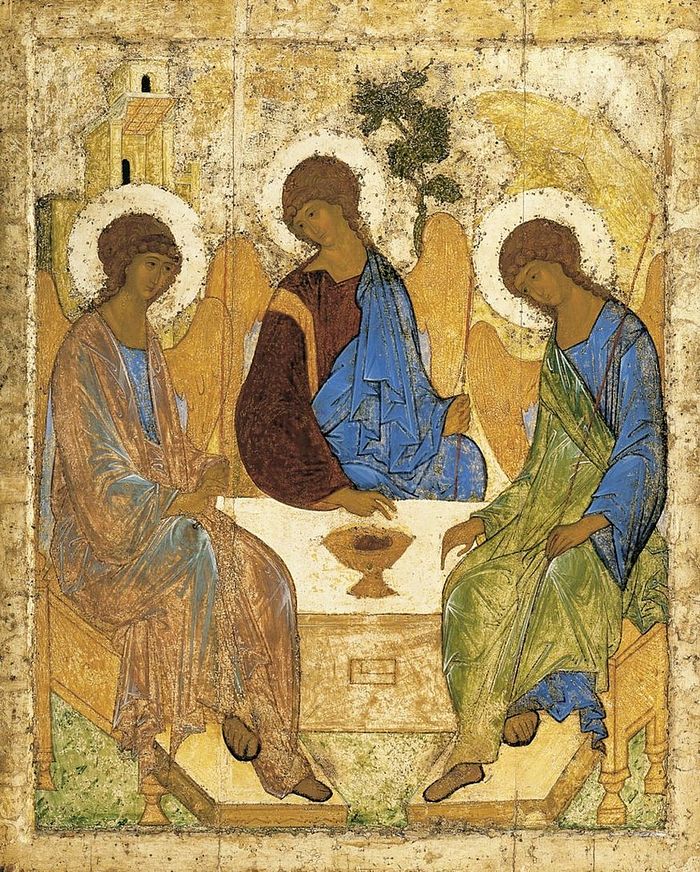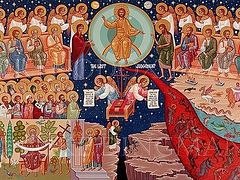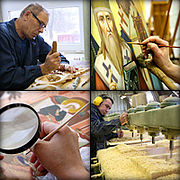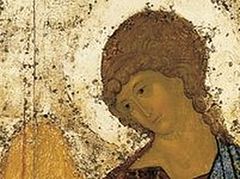Source: Aleteia
May 21, 2016
“It is most absurd and improper to depict in icons God the Father with a grey beard and the Only-Begotten Son in His bosom with a dove between them, because no-one has seen the Father according to His Divinity, and the Father has no flesh […] and the Holy Spirit is not in essence a dove, but in essence God.” (Great Synod of Moscow, 1667)
For the Russian Orthodox Church, depicting the Holy Trinity in art has been an issue of controversy for the past thousand years. Even though the Council of Nicaea in 787 permitted the artistic representation of God, the Russian Orthodox Church was unhappy with the popular images of God the Father and God the Holy Spirit.
They felt the gray-bearded man and the dove could not do justice to the unfathomable mystery of the triune God. In place of these widespread images of God, they chose to use Andrei Rublev’s Trinity icon as the proper way to depict the Father, Son and Holy Spirit.
The Russian icon is hard to grasp for those outside the Orthodox tradition and at first glance it doesn’t appear to represent the Holy Trinity. The central scene of the icon comes from the book of Genesis, when Abraham welcomes three strangers into his tent,
“And the Lord appeared to [Abraham] by the oaks of Mamre … He lifted up his eyes and … behold, three men stood in front of him. When he saw them, he ran from the tent door to meet them, and bowed himself to the earth …[Abraham] set [cakes, curds, milk, and a calf he prepared] before them; and he stood by them under the tree while they ate.” (Genesis 18:1–8)
Rublev’s icon depicts this scene with three angels, similar in appearance, sitting around a table. In the background is the house of Abraham as well as an oak tree that stands behind the three guests. While the icon depicts this scene in the Old Testament, Rublev used the biblical episode to make a visual representation of the Trinity that fit within the strict guidelines of the Russian Orthodox Church.
The symbolism of the image is complex and is meant to summarize the Church’s theological beliefs in the Holy Trinity. First of all, the three angels are identical in appearance corresponding to the belief of the oneness of God in three Persons. However, each angel is wearing a different garment, bringing to mind how each Person of the Trinity is distinct. The fact that Rublev depicts the Trinity using angels is also a reminder of the nature of God, who is pure spirit.
The angels are shown from left to right in the order that we profess our faith in the Creed: Father, Son and Holy Spirit. The first angel wears a blue undergarment, symbolizing the divine nature of God and a purple outer garment, pointing to the Father’s kingship.
The second angel is the most familiar as he is wearing the clothes typically worn by Jesus in traditional iconography. The crimson color symbolizes Christ’s humanity, while the blue is indicative of his divinity. The oak tree behind the angel reminds us of the tree of life in the Garden of Eden as well as the cross upon which Christ saved the world from the sin of Adam.
The third angel is wearing a blue garment (divinity), as well as a green vestment over the top. The color green points to the earth and the Holy Spirit’s mission of renewal. Green is also the liturgical color worn on Pentecost in the Orthodox and Byzantine tradition. The two angels on the right of the icon have a slightly bowed head toward the other, illustrating the fact that the Son and Spirit come from the Father.
In the center of the icon is a table that resembles an altar. Placed on the table is a golden bowl or chalice that contains the calf Abraham prepared for his guests and the central angel appears to be blessing the meal. All of that combined reminds us of the sacrament of the Eucharist.
While not the most direct representation of the Holy Trinity, it is one of the most profound visualizations ever produced. It remains in the Orthodox and Byzantine traditions the primary way to depict the Triune God. The icon is even held in high esteem in the Roman Catholic Church and is frequently used by catechists to teach others about the mystery of the Trinity.
The Trinity is a mystery and will always be so while we are on earth. However, sometimes we are given glimpses into God’s divine life, and Rublev’s icon allows us a brief second to peek behind the veil.





